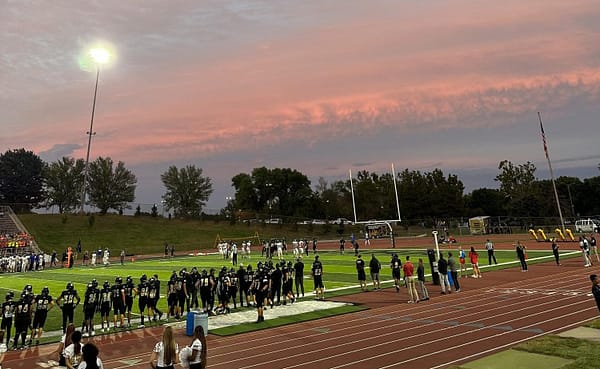How can we help Australia?
February 7, 2020
Australia’s fires have been raging for months now. Bushfires have impacted extensive areas since September, causing thousands to flee the blood-red skies. Over 2,000 homes have been destroyed, killing 27 people nationwide, and several others whom are missing. These Australia bushfires have rapidly spread to cover an area roughly the size of West Virginia.
Hot and dry weather conditions have prompted these mass bushfires. According to the the University of Sydney, 1 million birds, mammals, and reptiles lost their lives from the raging fires. Around 8,000 koalas have died from the fires, causing a possibility of extinction.
These firestorms are very typical in Australia. Many believe that climate change may be the reason for these fires.
“The fires were caused from a combination of drought, strong winds and heatwaves. We all know that Australia is a hot area, but it’s progressively gotten hotter due to the Earth’s overall temperature rising. Since areas have been getting even warmer, when fires occur, they’re more likely to stay burning due to the rising temperatures,” junior Molly Huber said.
The Indian Ocean dipole has worsened Australia’s fires and makes the waters in the Indian Ocean warmer and the Eastern Indian Ocean cooler which brings less rain in Australia. Extreme heat and drought tend to create fires.
The New South Wales police have arrested at least 24 people for starting bushfires. According to a statement made by the NSW police, officers have taken legal action against 181 people for fire-related offenses since November.
These fires are nothing that Australia has ever seen before. The smoke from the fires has led to the worst air in the world. This exposure to the bushfires has raised many fears of health effects that could last for years.
Australia’s largest mining company has announced that their coal output was down at one of its mines. The smoke from the wildfires has caused air pollution. This smoke is a dangerous heath risk because the exposure can result in respiratory tract irritation, lung infection, and more.
Not only can the fires cause physical harm, but it can cause mental trauma. Some families were forced to evacuate their homes due to the burning fires and had to find temporary shelters.
How can we help with what’s happening in Australia?
“Some of the best ways to help are to donate to fire departments in Australia, there are disaster relief sites and even the Save Our Koalas fund. One of the best ways to combat CO2 mass emissions coming from forest fires is to plant trees or to donate to companies who will plant trees,” Huber said. “Team Trees is a company formed by Mr. Beast and the Arbor Foundation and every dollar donated results in one tree being planted. In 2020, they got over $21 million donated. Planting trees is a more long term solution, but donating to relief programs based in Australia is more short term.”
Organizations across Australia are currently accepting donations towards the victims of Australia’s fires. Burke students are also taking notice of ways to help.
“Spreading awareness and donating to wildfire conservation and other services that are raising money to distribute aid,” junior Isabella Coonfare said.
With the thousands of displaced people in shelters and populations of koalas diminishing, here are some ways you can help.
These are organizations that are currently helping support those being effected from the fires in Australia.
The Australian Red Cross is helping donate money to support those in evacuation centers.
The Salvation Army in Australia is providing meals to those who have evacuated their homes.
The Wildfire Response is partnering with wildfire response organizations for effective responses.
Save the Children is donating money to support evacuation centers in New South Wales.
The Port Macquarie Koala Hospital is accepting donations to help rescue and treat injured koalas.













